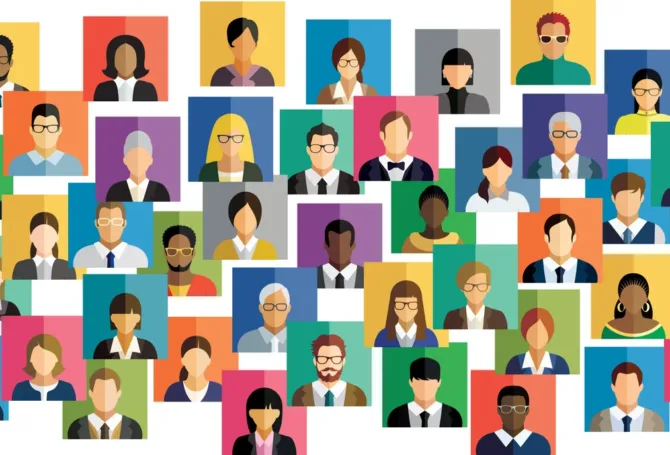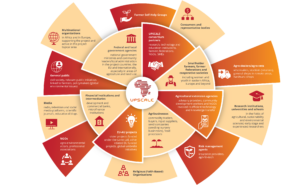
It’s Not Just Who You Know, But How to Rally Support with Digital Advocacy
Advocacy is an ancient art, but 21st century technology has provided advanced digital tools to track emerging issues, target key decision-makers, rally supporters and deliver effective messaging to a wider audience. The power of artificial intelligence will enhance those tools even more.
In the past, organizations relied on the savvy of public affairs pros who had years of experience in the trenches and lots of personal contacts in their Rolodex. That remains invaluable, but now more ways exist to leverage their experience and maximize their contacts.
“Digital advocacy involves using technology to create, promote and mobilize support for a cause or campaign,” according to one description. “While traditional advocacy remains impactful, the digital element has evolved into an essential tool for bolstering campaigns. Its speed, scalability and efficiency make it a go-to for engaging wider audiences and streamlining advocacy efforts.”
Technology can speed up information flows to help
lobbyists stay on top of fast-moving issues
and activate an army of online surrogates.
Here is a description of items in the digital advocacy toolbox:
 Analytics
Analytics
A good example is using analytics to deepen an understanding of why a policymaker would be interested in an issue. It’s obvious a congressman representing rural Kansas would be interested in wheat farming and agricultural subsidies. Analytics could reveal more detail about the impact of water policies, transportation costs and corporate farming, as well as specific farmer concerns in an individual congressional district.
That level of information could allow a lobbyist to talk with a congressman with a level of knowledge equal to or exceeding their constituents, which would be invaluable to advocacy. The information would make it easier for a lobby team to identify and build a coalition of congressional representatives with a built-in battery of real-time constituent advocates.
 A/B Testing
A/B Testing
Another technology-enabled advocacy tactic is using A/B testing via email to evaluate responses from a target audience. Instead of relying on intuition or best guesses, this form of empirical research produces real-life feedback on how different messages and images resonate.
The results can inform messaging and be used as a recruiting tool for grassroots efforts or lining up political sponsors. The information can be nuanced – Statement A may elicit the best response from certain stakeholders an Statement B may work for others. Assuming the statements don’t conflict, the advocacy team has the inside track on targeted outreach.
 Simulated Site Visits
Simulated Site Visits
Policymakers have busy and often unpredictable schedules that make it hard to line up site visits. Video and websites offer an opportunity for simulated site visits and meetings with top corporate, nonprofit or local officials. The advantage is the ability to show policymakers sitting in their own office what you want them to see and hear a message directly from an organization’s principal or key employees.
Giving a policymaker a “personal” view of an operation gives them useful background to understanding follow-up contacts, whether in the form of fact sheets or specific legislative requests. You have made it easy for a policymaker to be informed and helpful.
Story Banking
 The most influential voices are often people directly involved with or impacted by an issue, rather than a hired gun. A good example is the consumer movement to achieve the right to repair their own electronic devices or choose their own repair service. Communication tools make it vastly easier to solicit, collect and deliver messaging from individual people.
The most influential voices are often people directly involved with or impacted by an issue, rather than a hired gun. A good example is the consumer movement to achieve the right to repair their own electronic devices or choose their own repair service. Communication tools make it vastly easier to solicit, collect and deliver messaging from individual people.
Amassing stories and making them easy to access online can produce a powerful grassroots advocacy tool. This form of advocacy provides policymakers with “first-hand” examples of why a policy change is needed, which they in turn can cite as reasons for their support.
Advocacy Organizational Tools
Effective advocacy in today’s super-saturated media markets requires teamwork. Using computer tools can assist in assessing the relative importance and impact of different issues. A financial analysis can show the relative costs of different policies or estimated tax consequences, which can influence priorities for an organization’s advocacy agenda.
Online scheduling tools can inform a team of advocates of potential opportunities for outreach, either in person, through grassroots efforts or online. Those opportunities can be woven into a strategic, coordinated outreach plan. This level of coordination can be used to ensure advocacy efforts focus on highest priority issues, avoid tripping over each other and invest resources most productively.
 Stakeholder Mapping
Stakeholder Mapping
Assessing and keeping track of key stakeholders is like keeping track of other valuable resources. Whether the mapping is by issue or team member relationship, advocacy groups have working knowledge of a key resource that can include employees, board members and customers.
The stakeholder map provides a graphic way to interact with and engage an advocacy army. Relevant mapping tools also offer the ability to keep track of target officials, outreach efforts and key dates. A more advanced form is to create an “alignment map” showing key policymaker and grassroots supporters on a particular issue.
Information Sharing
In old-school lobbying, a veteran lobbyist carried around “insider” information in their head. Technology tools make it easier to share that insider information and insight with an advocacy team and top managers. Sharing requires protocols for how information is used, but that risk is offset by the value of having other team members aware of it and possibly enhancing its application because of their knowledge.
Practical Advocacy Technology
None of these tools are revolutionary. They are just more feasible to create and practical to manage because of technology. Creating professional videos, conducting online research and information sharing tools are here and getting better every day. Advocacy teams are using them and innovating them to match their specific circumstances and needs. This often requires adding younger, more technology-savvy professionals to advocacy teams.
 Innovation should include how to apply artificial intelligence to enhance advocacy tools. AI affords opportunities to analyze data sets, synthesize a wide range of views and even suggest advocacy opportunities. Bots won’t replace knowledgeable, on-the-ground lobbyists, but they can speed up information flows to help lobbyists be on top of fast-moving issues and activate an army of online surrogates.
Innovation should include how to apply artificial intelligence to enhance advocacy tools. AI affords opportunities to analyze data sets, synthesize a wide range of views and even suggest advocacy opportunities. Bots won’t replace knowledgeable, on-the-ground lobbyists, but they can speed up information flows to help lobbyists be on top of fast-moving issues and activate an army of online surrogates.
Empowering Individuals
Digital advocacy levels the playing field, giving individuals and small groups a tool to compete with powerhouse lobbyists by making it easier for average people to speak out to influence policy, find allies and engage in public problem-solving.




